Projectlette
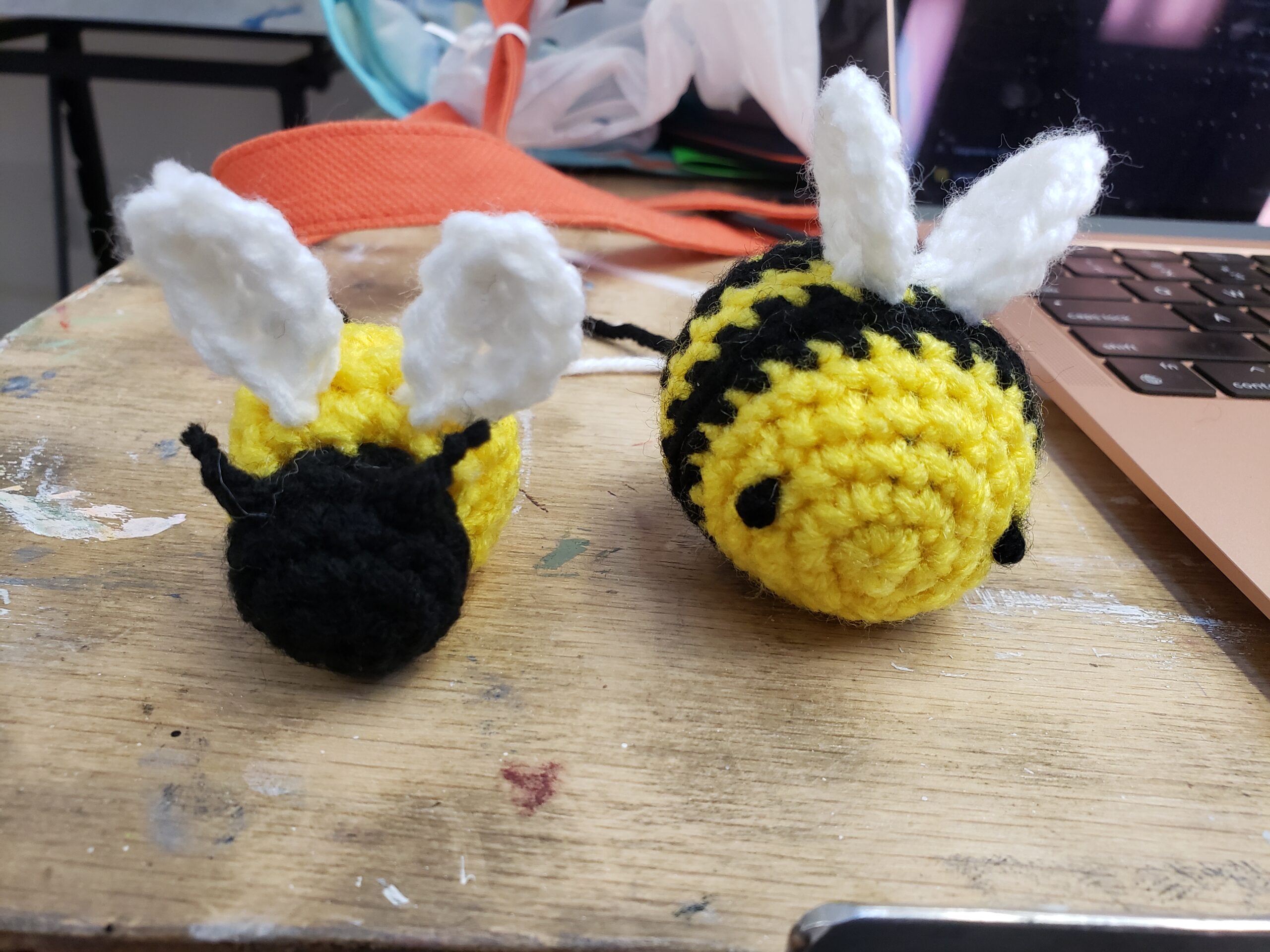
For this projectlette, I wanted to experiment with some of ChatGPT’s uses in the art world, particularly in designing crochet patterns. I was curious to see if the AI was capable of this, as it would require some level of knowledge of what the object is meant to look like. I went with a simple amigurumi in the form of a bee, starting by creating my own bee from a pattern I developed myself, which can be seen to the right in the image above. I then asked ChatGPT to design its own bee amigurumi pattern. At first glance, the pattern looked adequate. I followed the instruction given to create the bee pictured on the left. As one can plainly see, it’s not quite an accurate bee; it’s missing the characteristic stripes and its body is a little oddly shaped. However, the AI does appear to have an idea of what a bee is supposed to look like, especially regarding the standard bee coloration of black and yellow. The final product reminds me quite a lot of the sort of images I would get from asking DALL-E 2 to generate images of bees.
In conducting this experiment, I did not simply want to determine AI’s ability to replace human artists; rather, I wanted to see what it could contribute to the field with its unique renditions. It’s clear that AI is in no position to fully replace a designer, at least not in the realm of fabric arts. However, I find its take on a bee fascinating and still visually pleasing; I can see the program being used to generate other interesting forms of objects we already think we have a standard vision for and using its results as inspiration for new work. It’s because of this potential that I still choose to see ChatGPT and other AI programs as a beneficial tool rather than an enemy to the arts.
DALL-E 2
Prompt 1: A polaroid photo of a lego block on a table
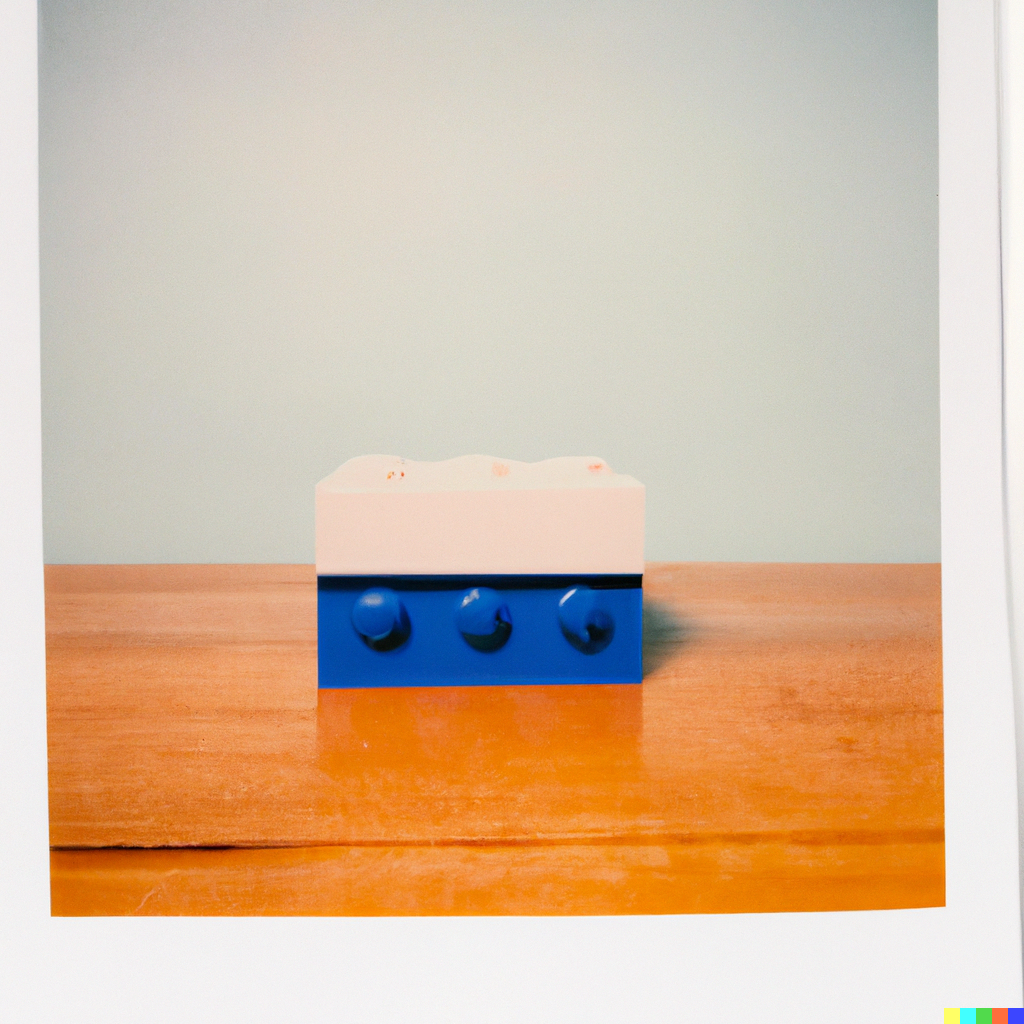
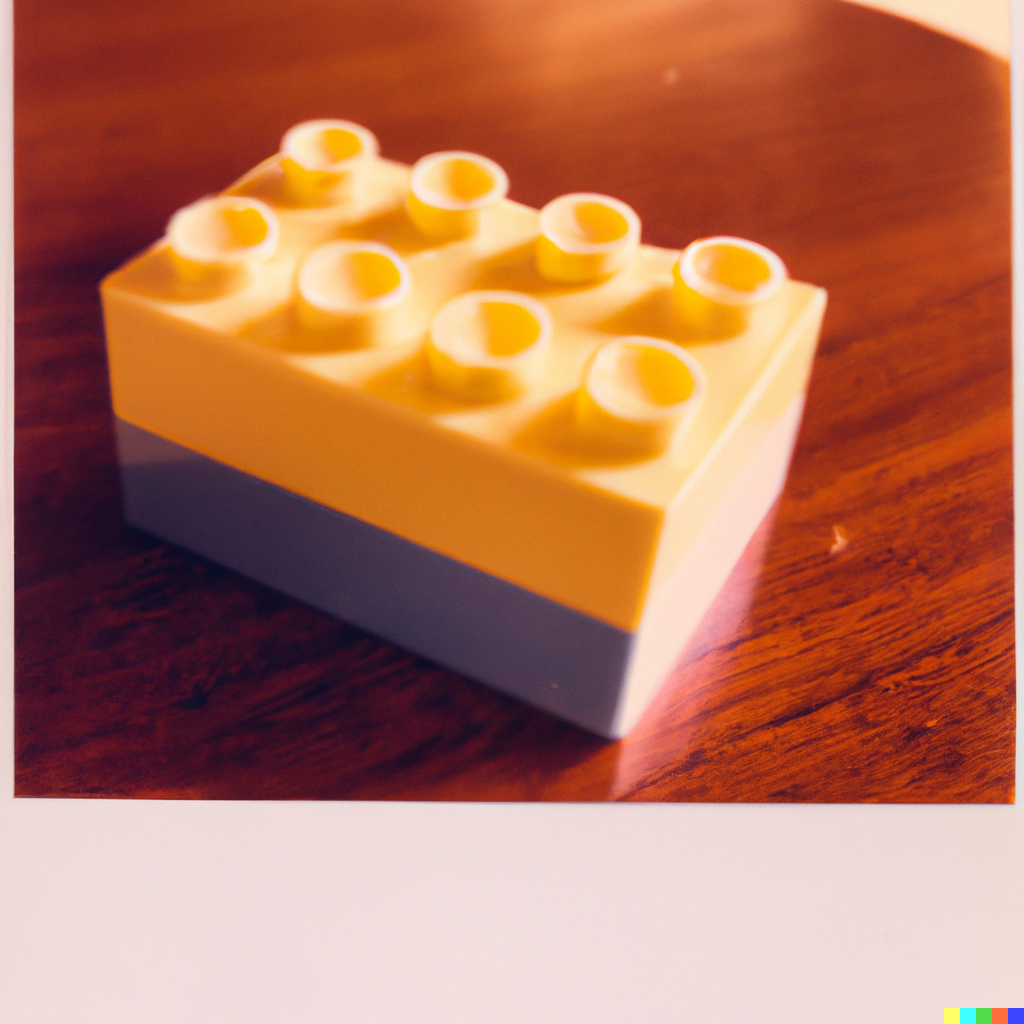
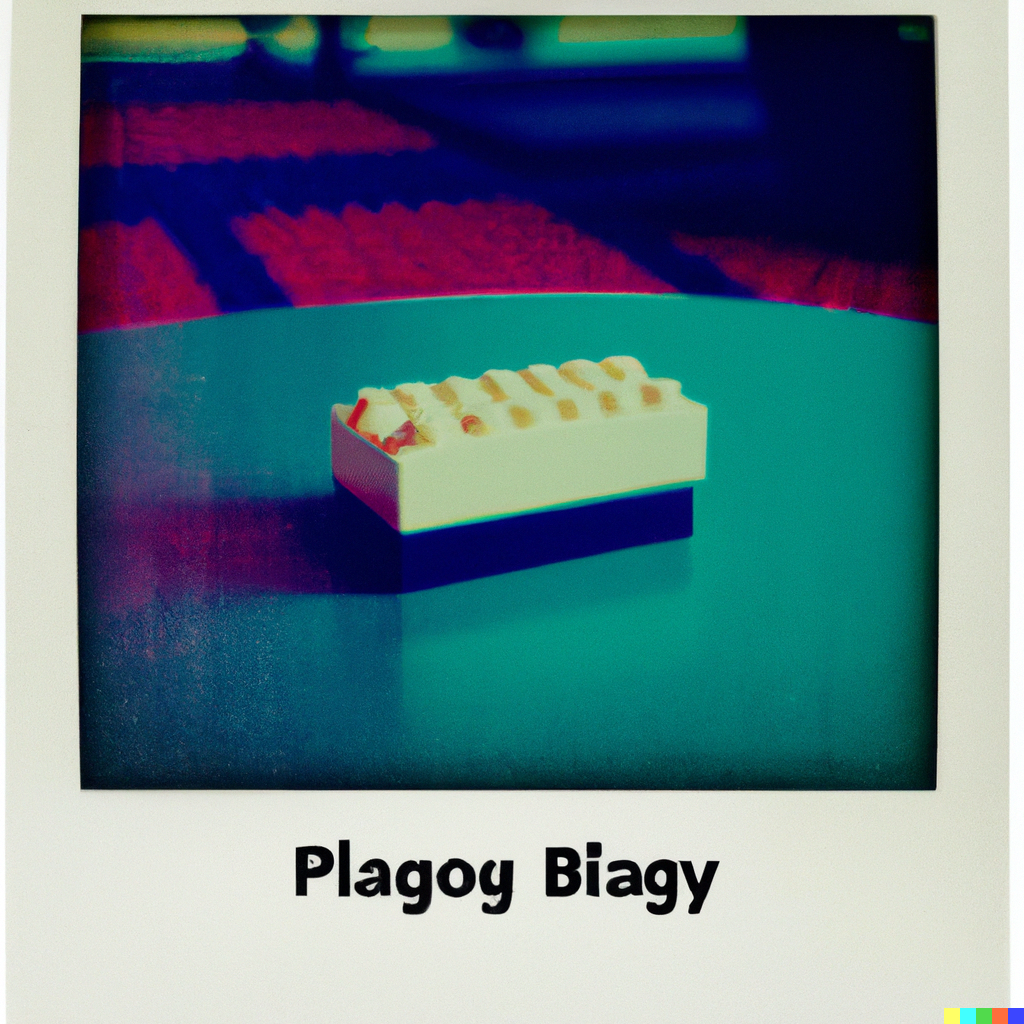
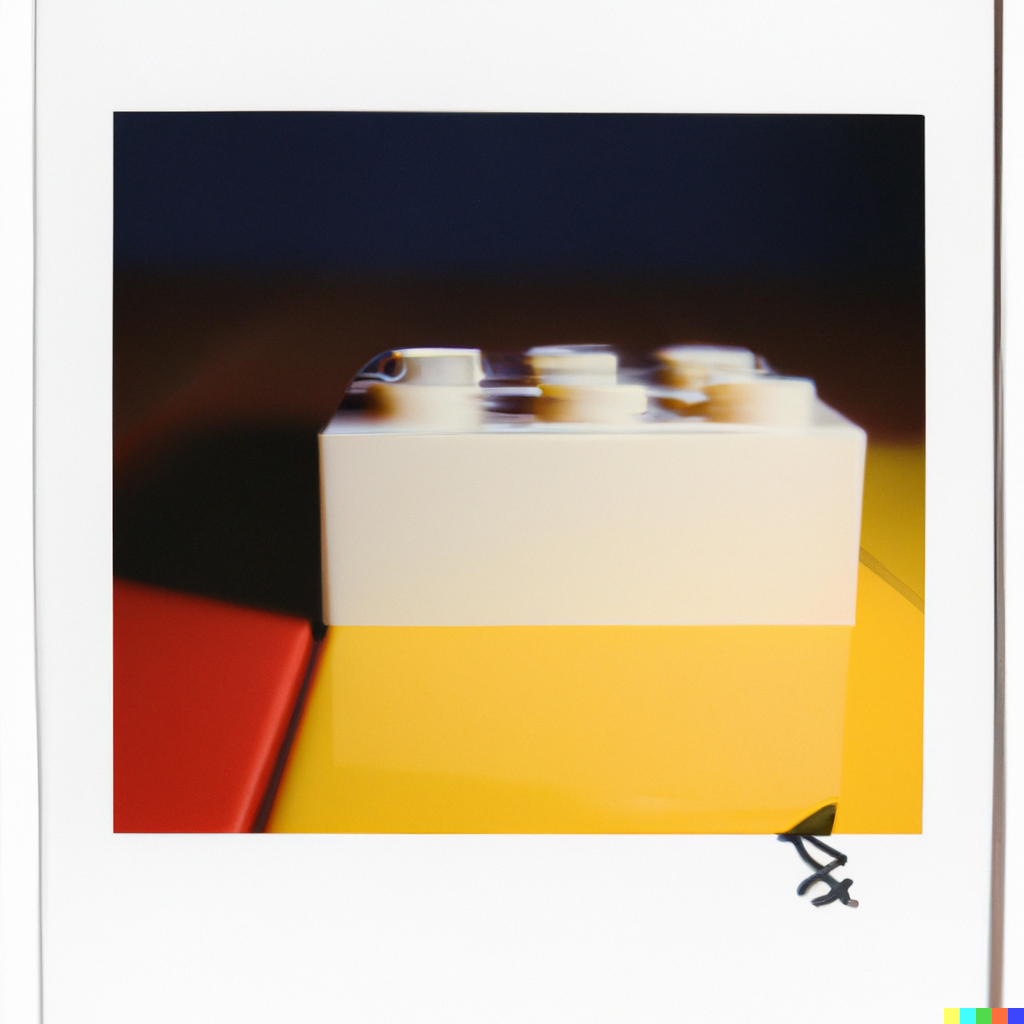
Prompt 2: A pointillist painting of a blue apple in a plastic bag

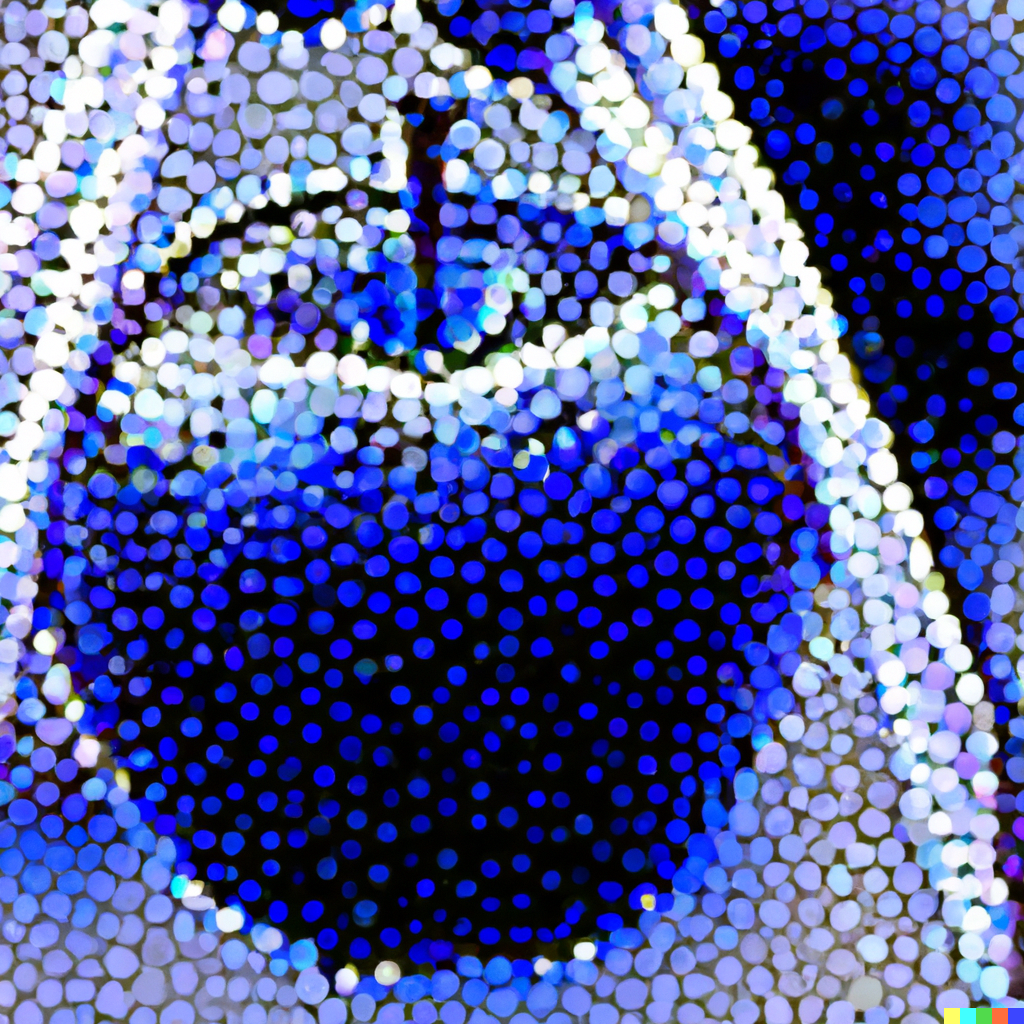
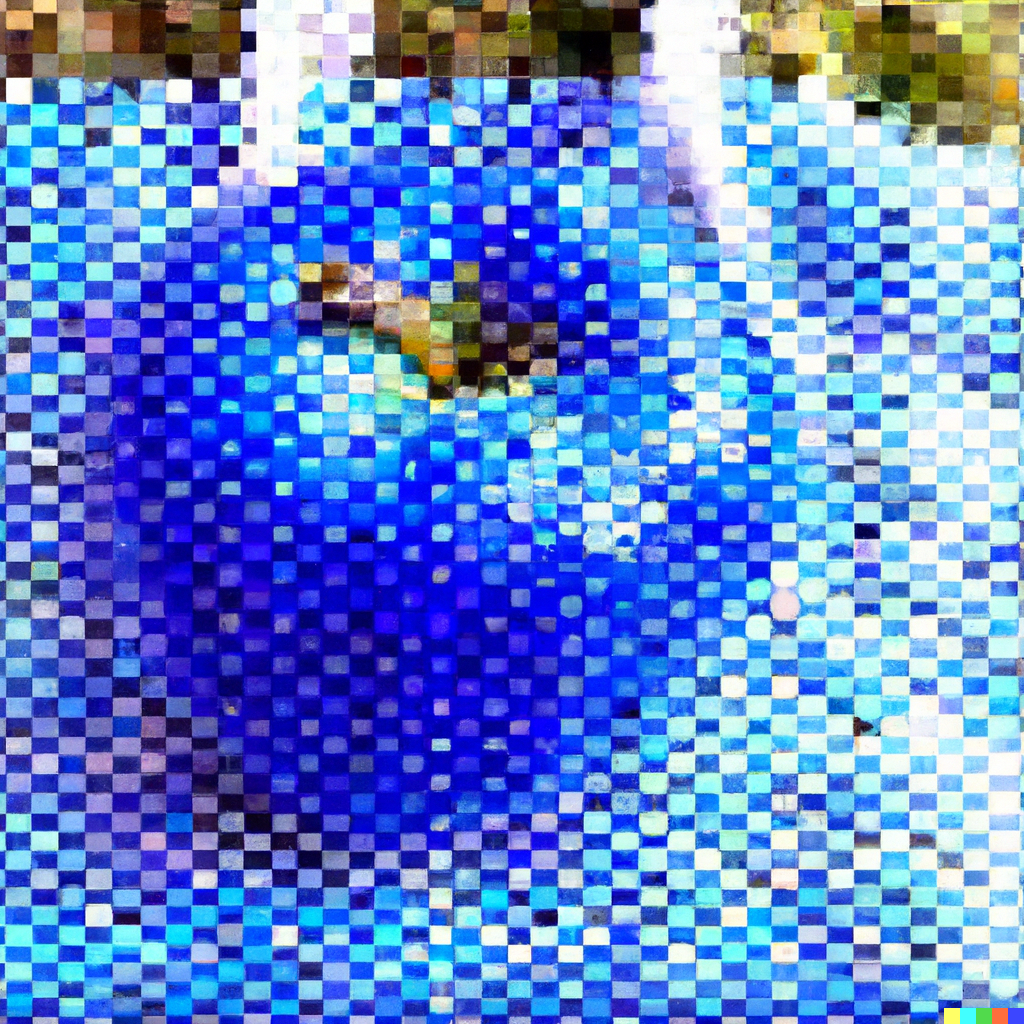
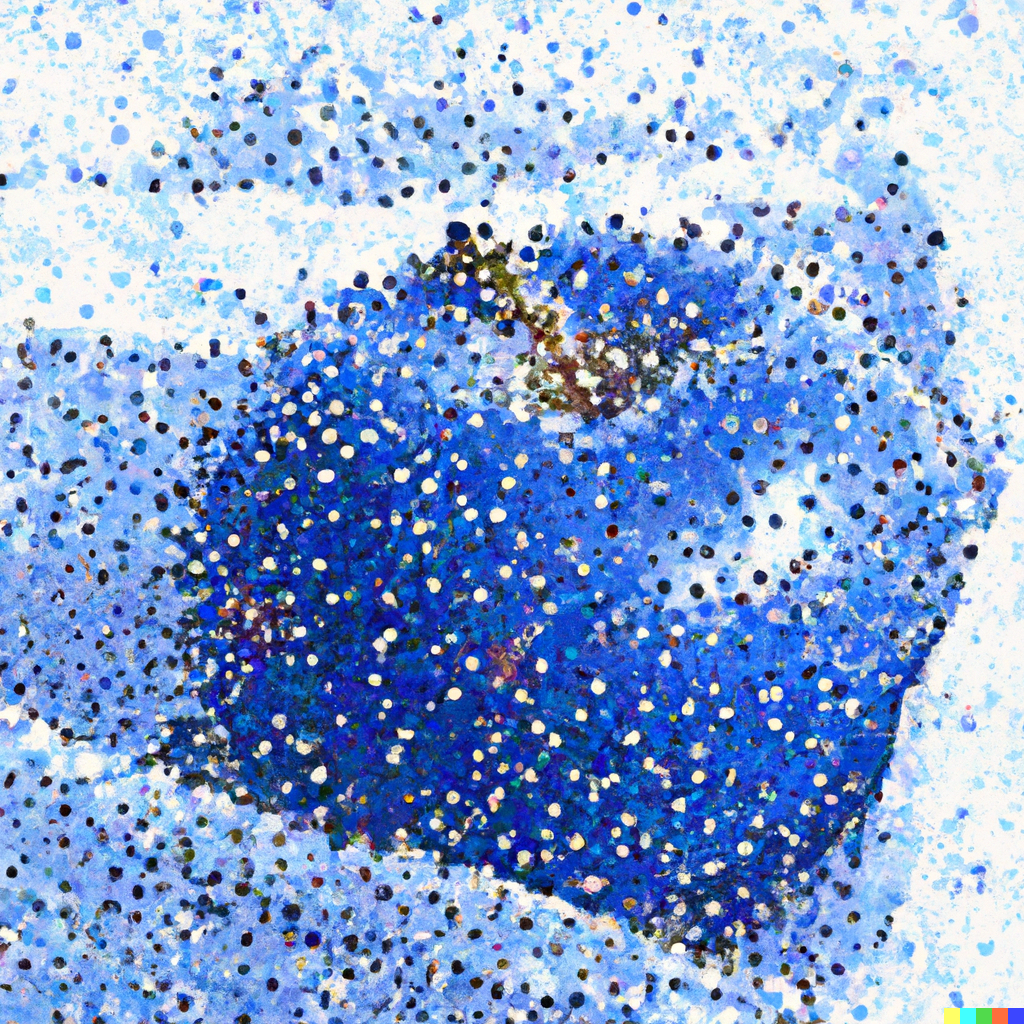
Prompt 3: A 3D rendering of a bumblebee standing on a newspaper surrounded by flowers
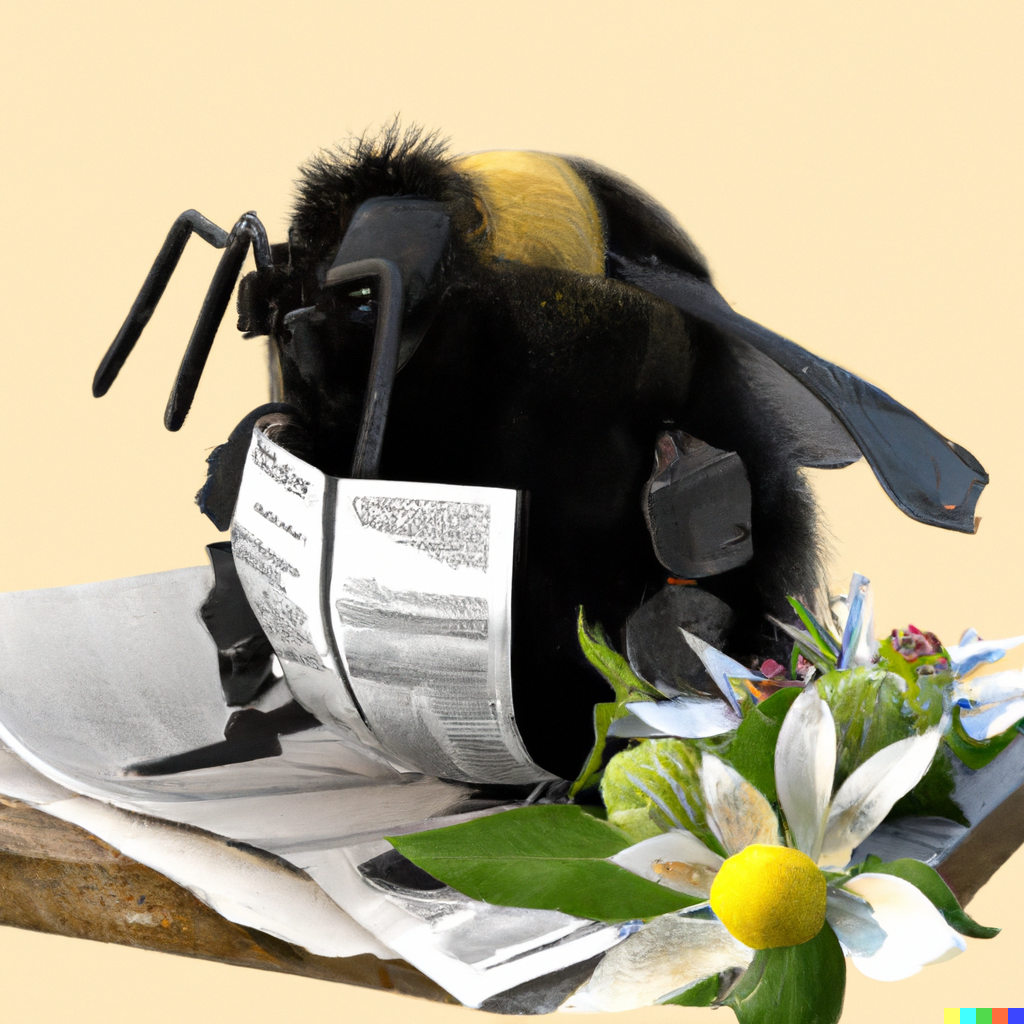
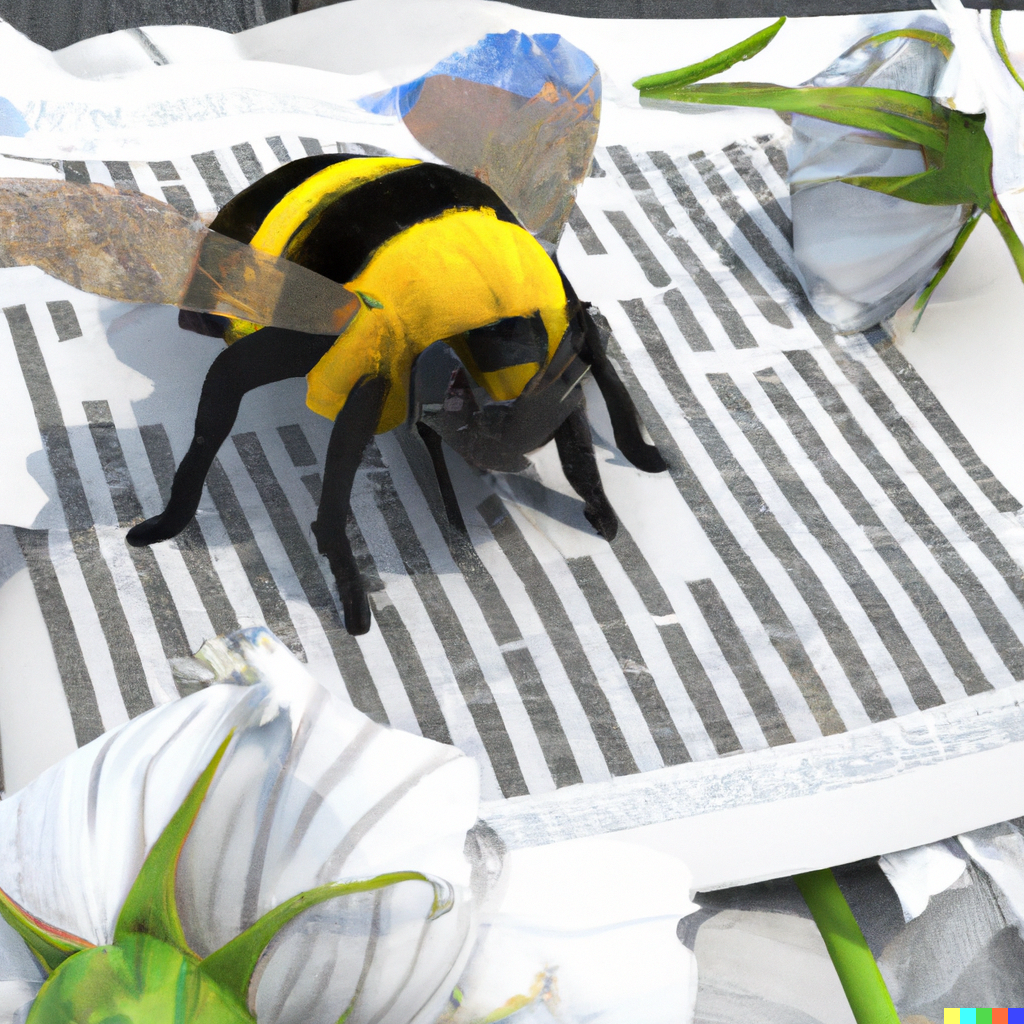
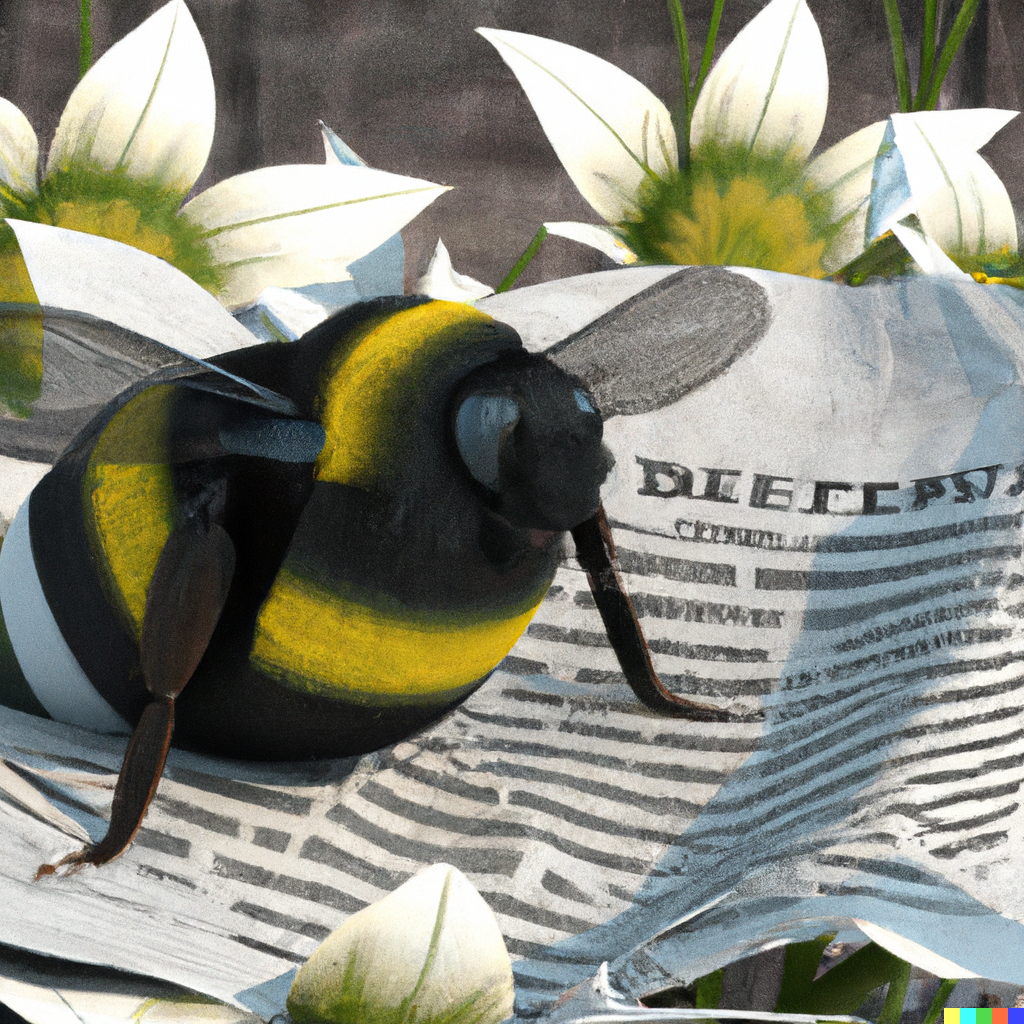
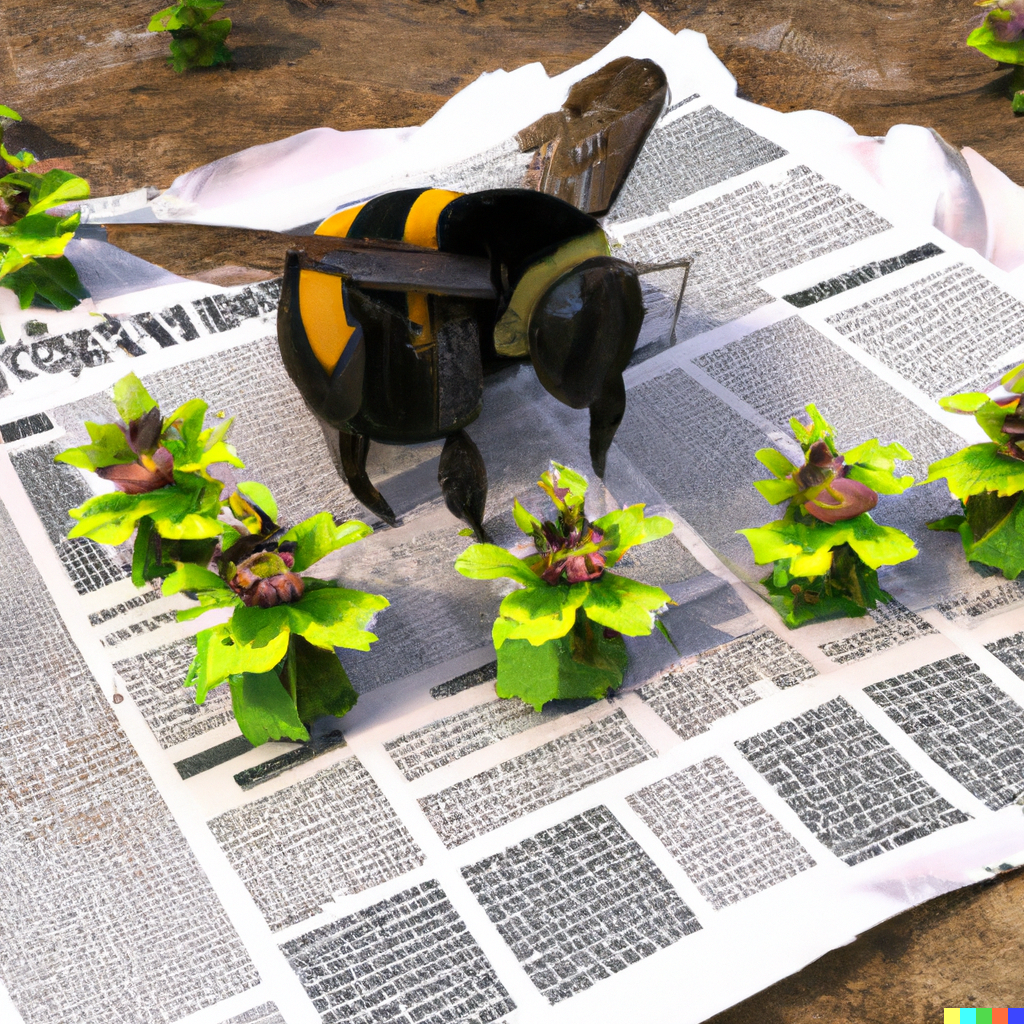
After experimenting with DALL-E 2, I’ve gained an idea of what the program does well and what it does poorly when it comes to generating images. Using these simple prompts, I found that adding style descriptions, such as instructing it to make a painting or a photo in a particular style, helps greatly in the A.I. understanding what the image needs to look like. It also mostly makes visually appealing images, implying the program has an understanding of composition and color. However, there are some areas where DALL-E struggles. When describing the location of objects in relation to each other, it sometimes gets a little confused. It usually manifests this by considering the two objects to be one, as shown in the warping of some of the apple paintings, or by taking it too literally, such as in the first bee rendering where the flowers around the bee are placed very uniformly and separated. It also definitely appears to struggle with generating text; at times it doesn’t bother trying to generate it, as shown in some of the newspapers in my final prompt. Other times it tries generating text, but it comes out looking like made-up characters, like in the headlines of the newspapers in the first two bee images. The last common way it generates text is in that of the second lego photo, where the characters themselves turn out fine but the words they spell are gibberish. That being said, DALL-E 2 generates visually pleasing images for the most part and I can see it being a useful tool.
While some artists are already using A.I. image generation to aid them in their work, I expect it to become more mainstream in the future. It has a lot of potential to create reference images that would otherwise be difficult to find online, provide inspiration for projects like interior design, and help people who struggle to visualize ideas in their minds. Unfortunately, the technology comes with numerous ethical issues that we are already seeing in play instead; many of its users are intentionally creating images in the styles of existing artists to pass as their own, which isn’t helped by the fact that many websites where artists post their work, such as DeviantArt, are allowing A.I. image generators to learn from the work posted there without the artists’ permissions. Another issue beginning to arise is the way that companies are seeing A.I.-generated images as a replacement for the work of human artists, thus taking the jobs of multiple artists and replacing them with a few people to operate A.I. generators. My hope for the future of this technology is that we address these problems and establish limitations that allow society to use this technology in a beneficial and ethical way.
Rebuild The Internet
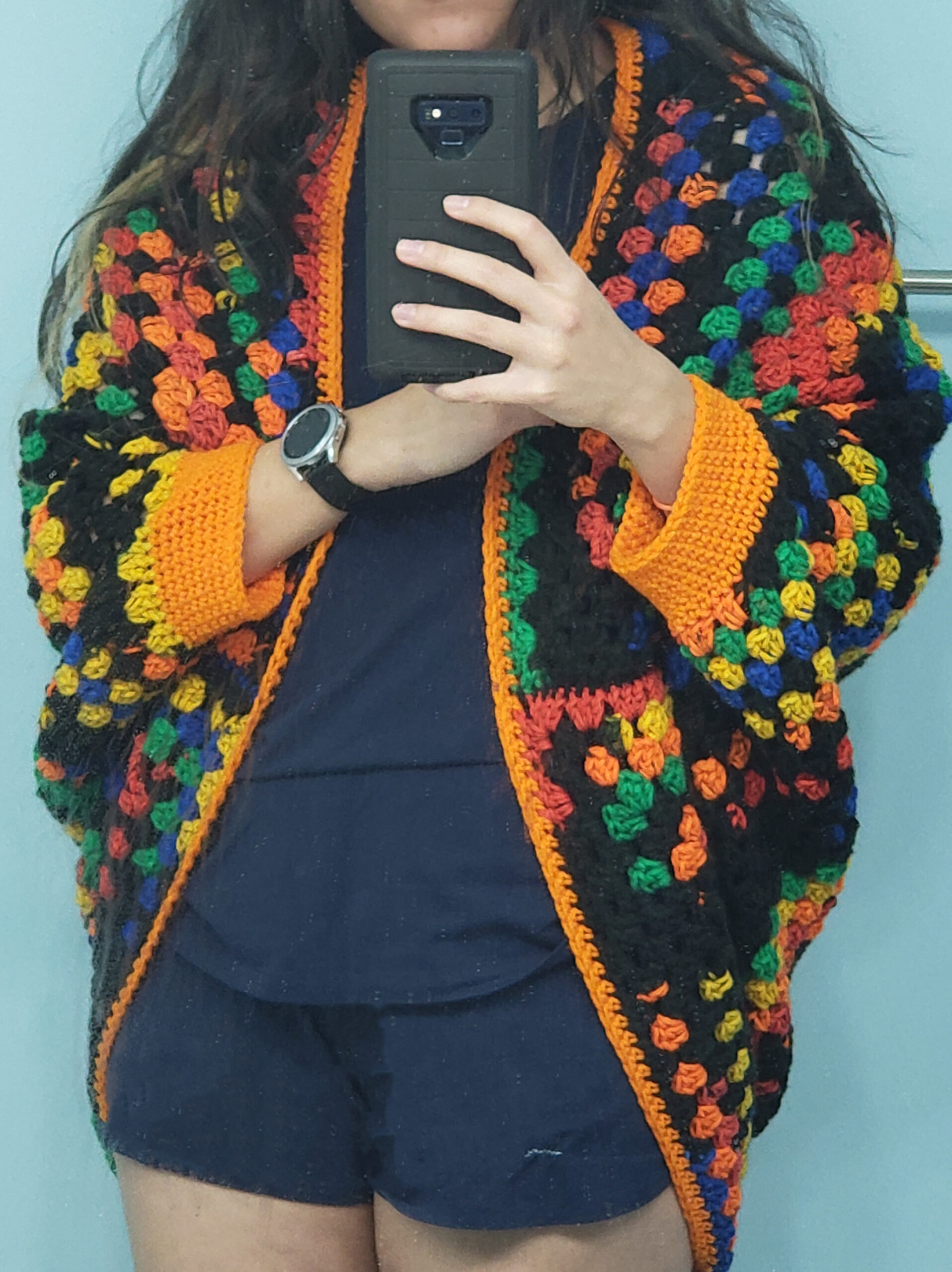
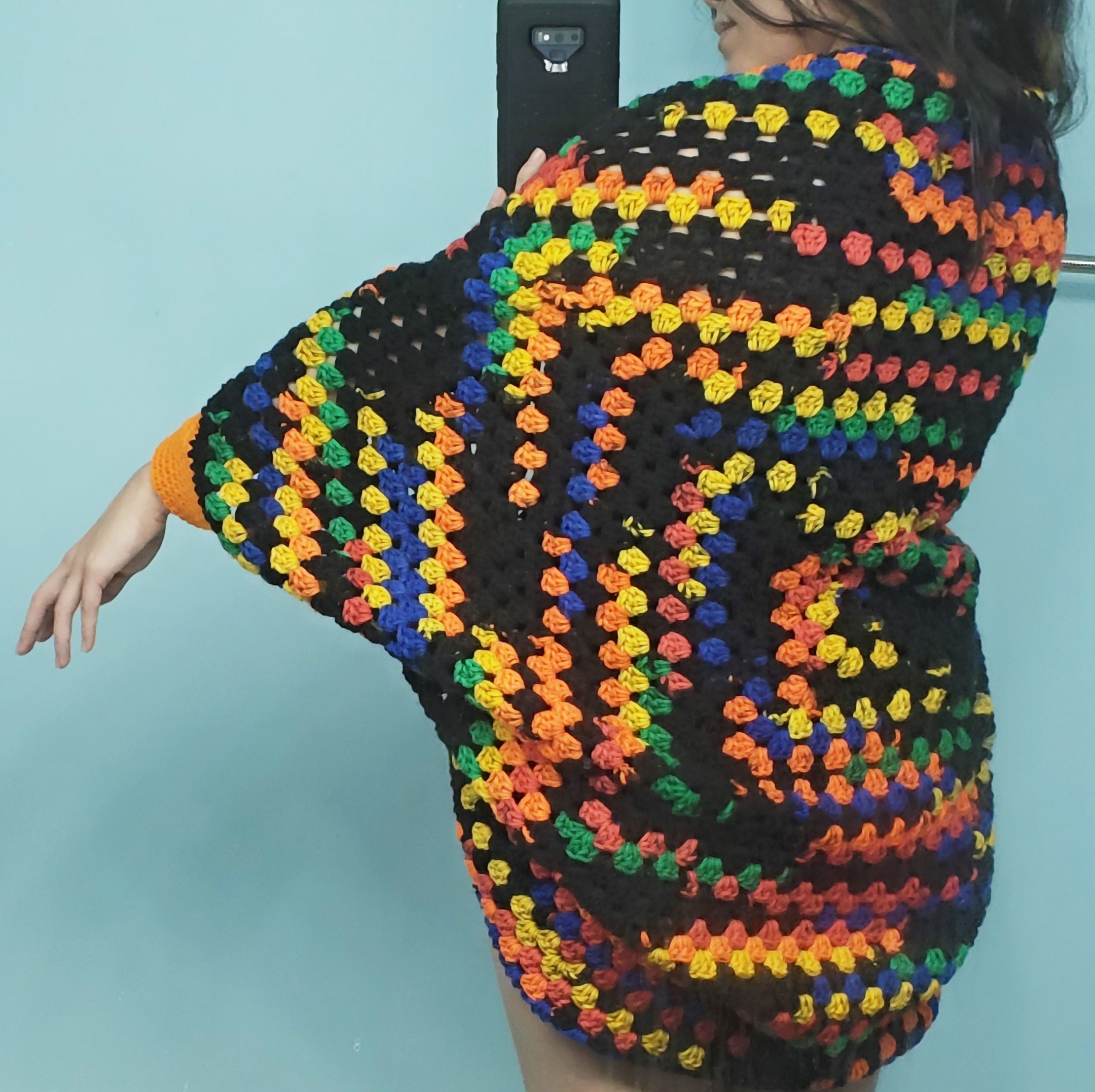
This colorful cardigan I’ve crocheted together represents the way I view the internet. As an artist, the internet has been a valuable resource for me in creating better work. This is mostly due to the fact that on the internet, I can see the work of so many different people in so many degrees of quality and style. In this cardigan, I used a variety of colors in an irregular and inconsistent pattern; the structure of the cardigan, comprised of individual stitches, in addition to these color choices and patterns is a reference to David Weinberger’s Small Pieces Loosely Joined, in which he describes the web as a loose federation of documents and paints it in a chaotic light. While I agree and show in my cardigan that the web is a compilation of small pieces, I would say instead that the web is a compilation of groups of pieces; like the individual stitches of the sweater group together to create blocks of color, the content people post to the web creates groups of similar interests, and oftentimes these groups become tightly bound yet vast sources of information and discourse, rather than simply a bunch of pieces loosely joined. Yes, the web is full of an endless variety of things, hence the colorful and almost gaudy nature of my project, but there is an organization to it as well.
Expanding upon the web’s way of creating networks of like-minded users, the fact that my project is a cardigan is also no coincidence. The internet allows people to join in on established platforms of users who share their interests, and if one doesn’t already exist, it also has a way of herding people of that shared interest together and allowing them to build one. People build upon their identities on the web, or even create new ones; Weinberger explores this concept as well in his writing, telling the story of Michael Ian Campbell’s creation of an alternate personality through the internet. How we appear to others is very malleable and entirely up to us online, personalities and perceptions changing from webpage to webpage as easily as changing clothes. This is why I ultimately decided on representing the internet as an article of clothing. What we wear has a profound impact on how we are perceived and, like our use of the internet, the people we find ourselves associating with.
Week 3
Having lived through some of the early rise of the internet, I remember that while the internet was considered a useful tool and a resource to be wary of, it was not yet considered a technology that was almost inseparable from daily life like it is today. Sure we used it to play games and share some information, but at the time the main modes of communication were still phone calls and paper mail. Some kids, like myself, made little to no use of the internet while at home, and that had no impact on our immersion in the world.
Now, though, it’s virtually impossible to go through day-to-day life without encountering the internet. Information is shared primarily through the internet, whether that be through online articles or online messaging. It’s a regular occurrence to be in communication with people across the country or even the world, and to not be one of those people would be a major inconvenience. I have family who still live without the internet, and I see the obstacles they encounter on a frequent basis: difficulty managing accounts held with various companies, shopping, making doctor’s appointments, keeping up with the news, and more. The rest of the population is so immersed in the use of the internet that anyone without it is at a disadvantage.
Put briefly, in the early 2000’s the internet was a novelty that we had a choice in whether or not we used it. Today, there’s little choice but to join in lest we be left behind by society.